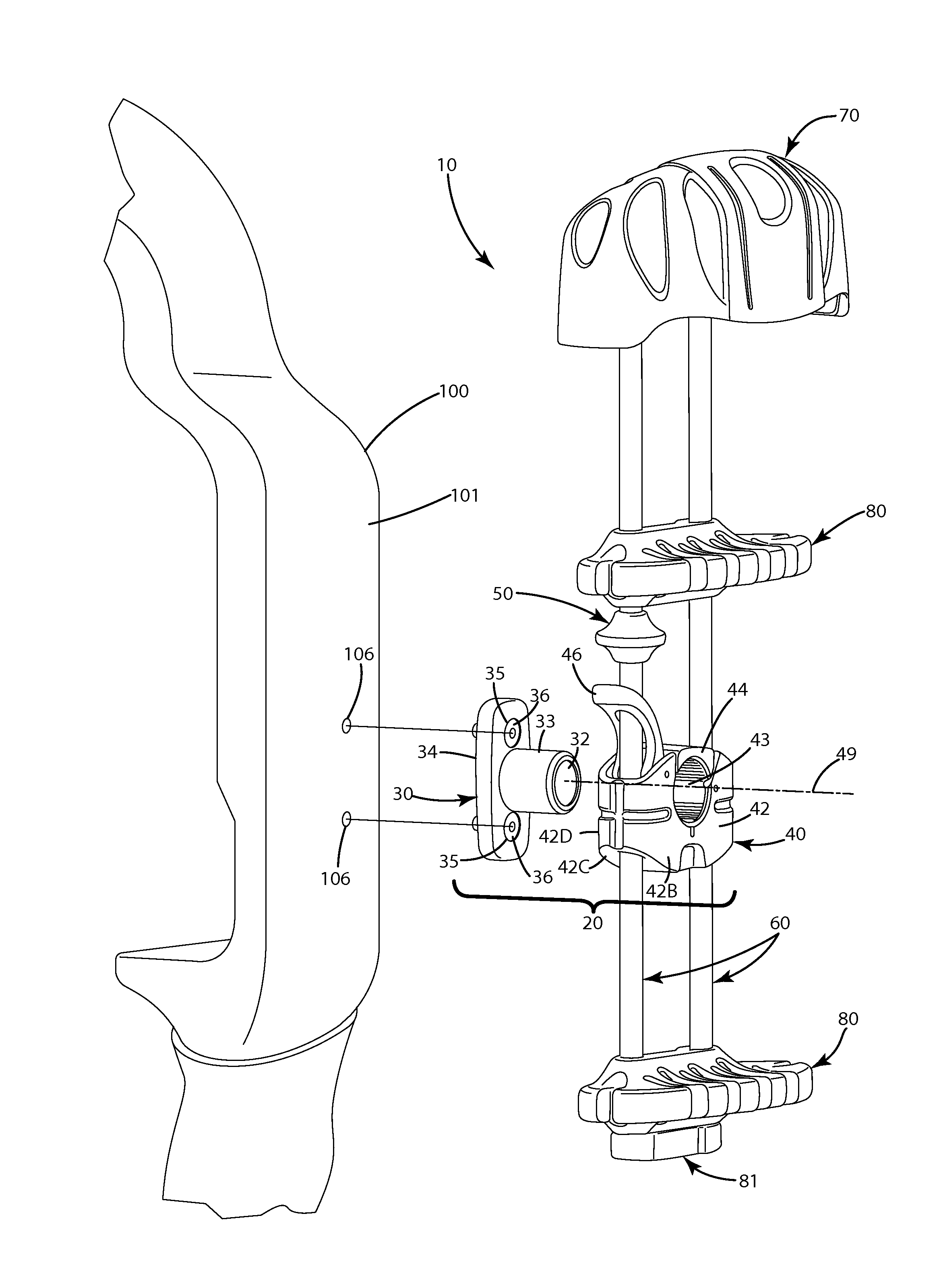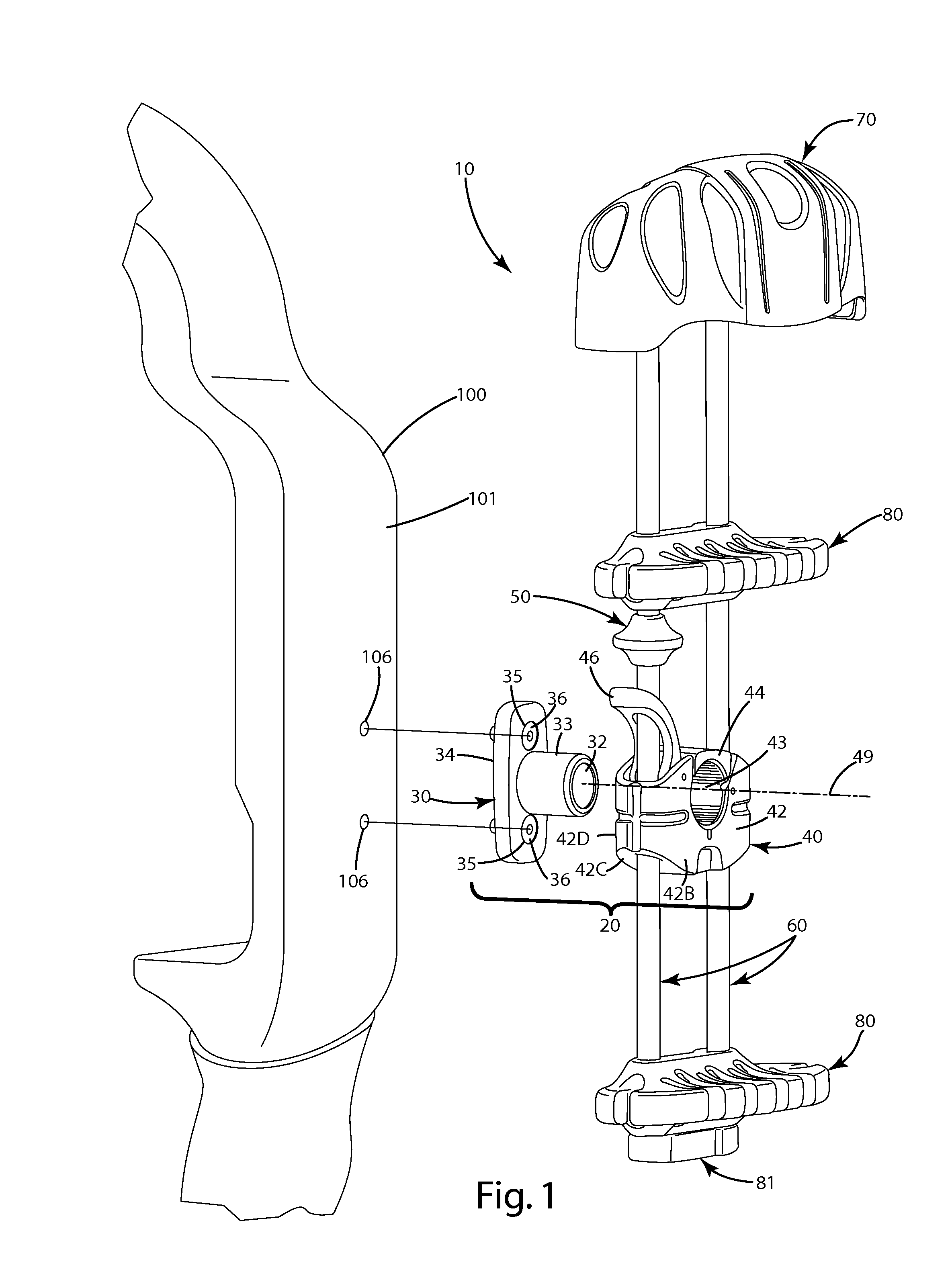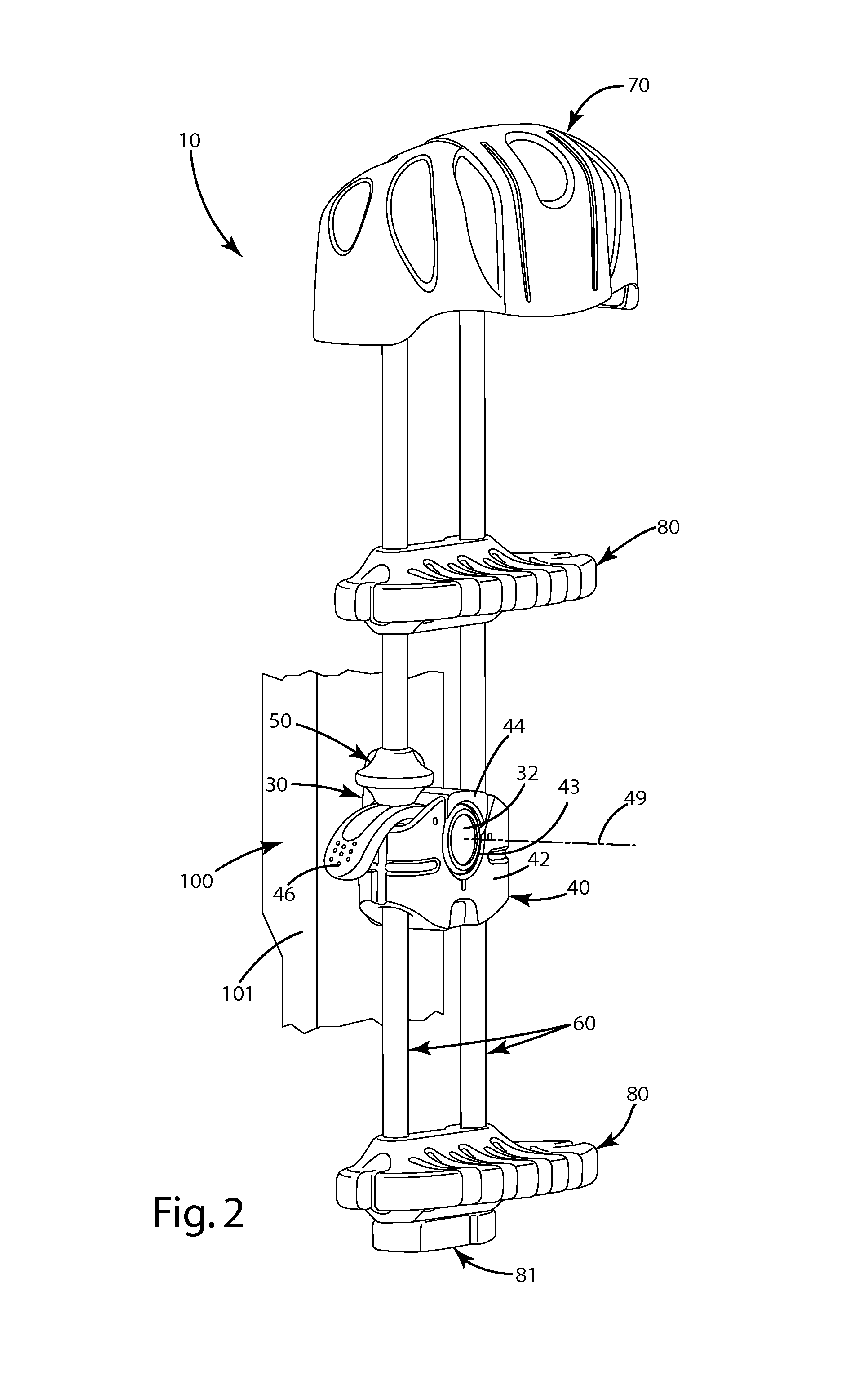Archery quiver
a quiver and archery technology, applied in the field of quiver for archery bows, can solve the problems of reducing the holding strength of rubber elements, cumbersome operation, and the mounting element, and achieve the effects of enhancing the retention capability, simple and efficient, and reducing the potential for noise generation
- Summary
- Abstract
- Description
- Claims
- Application Information
AI Technical Summary
Benefits of technology
Problems solved by technology
Method used
Image
Examples
Embodiment Construction
[0024]A current embodiment of the mounting system is illustrated in FIGS. 1-7 and generally designated 10. The mounting system 20 generally includes a primary element 30 and a secondary element 40. An optional secondary locking member 50 can be in close proximity to a portion of the secondary element 40. The secondary element also can be joined with supporting structures 60, which are generally shown or in the form of rods or bars extending above and below the mounting system 20. To the supporting structures 60, a hood 70 can be joined distal from the mounting system 20. One or more arrow holders 80 can be joined to the supporting structures 60 as shown as well.
[0025]Although shown in conjunction with a quiver mounted to an archery bow 100, and more particularly to an archery bow riser 101, the mounting system 20 can be used to mount the quiver, or any other items attached to the mounting system, directly to a variety of archery or hunting items, for example, a harness, a belt, a tr...
PUM
| Property | Measurement | Unit |
|---|---|---|
| cylindrical shape | aaaaa | aaaaa |
| distance | aaaaa | aaaaa |
| resilient | aaaaa | aaaaa |
Abstract
Description
Claims
Application Information
 Login to View More
Login to View More - R&D
- Intellectual Property
- Life Sciences
- Materials
- Tech Scout
- Unparalleled Data Quality
- Higher Quality Content
- 60% Fewer Hallucinations
Browse by: Latest US Patents, China's latest patents, Technical Efficacy Thesaurus, Application Domain, Technology Topic, Popular Technical Reports.
© 2025 PatSnap. All rights reserved.Legal|Privacy policy|Modern Slavery Act Transparency Statement|Sitemap|About US| Contact US: help@patsnap.com



